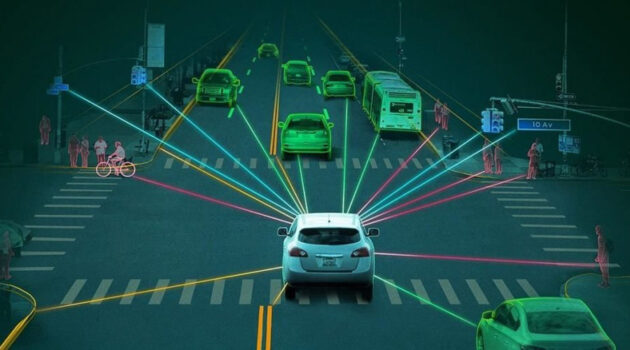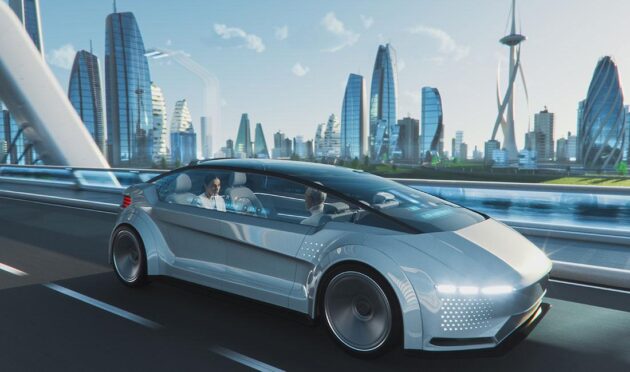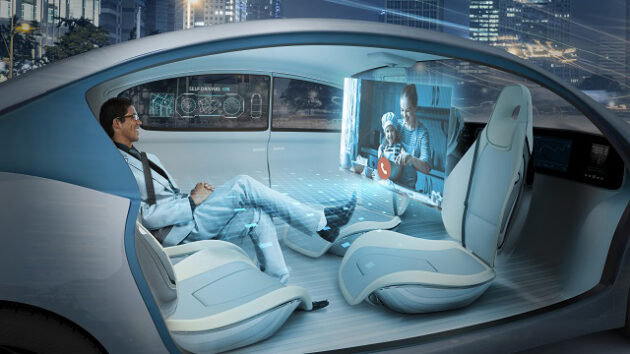
The rise of self-driving cars, known as autonomous vehicles (AVs), is set to bring a revolution in the transportation sector of the United States. These vehicles, powered by artificial intelligence and sensors, have the potential to improve safety, efficiency, and accessibility on the roads.
Well, the transportation industry is undergoing a major technological transformation as autonomous vehicles become a reality. These vehicles are redesigning transportation by replacing Artificial Intelligence with human control. All of this does seem to be exciting and convenient but simultaneously some risks and challenges need to be overcome.
Moreover, autonomous vehicles have gone through different stages of development. It started with Level 0, where there is no AI technology in the vehicle, and grew to Level 5, where the AI system can drive independently even in complex situations like changing weather conditions. As we move closer to full automation, the advantages of self-driving cars become clearer. Tesla is a prime example of the AV technology innovation.
However, if you are ready to embrace the future of transportation with autonomous vehicles then make sure you have a dependable internet connection like Xtream Mediacom as it provides the backbone for the connected autonomous vehicle ecosystem. It’s lightning-fast speed and robust network infrastructure ensures that vehicles can communicate, exchange data, and navigate the roads efficiently and safely.
Now in this article, we will explore the future of AVs and their significant impact on transportation in the USA. Also will discover the benefits of AV in our daily life.
-
Enhanced Safety on the Roads

According to government data, driver behavior or mistakes contribute to 94 percent of accidents. For example, tired drivers are twice as likely to make errors, as reported by the NHTSA. To prevent accidents, driver-assist technologies such as blind spot monitoring and lane departure warnings can be beneficial.
Additionally, the deployment of automated emergency braking can significantly reduce rear-end collisions, which are the most common type of crash. As autonomy levels increase, there is potential to minimize risky and unsafe driving behaviors.
One significant advantage is the potential reduction in the deadly consequences of distracted driving, which currently accounts for about one-third of road fatalities.
In a fully automated vehicle, all occupants can safely engage in more productive activities, such as checking and responding to emails.
-
Less Traffic Congestion
When there are fewer accidents or minor collisions, it leads to reduced congestion on the roads. Autonomous vehicles (AVs) are designed to maintain a safe and steady distance between vehicles, which helps minimize stop-and-go traffic patterns that cause blocking.
According to researchers at the University of Texas, if AVs travel closely together in platoons, it could potentially decrease congestion-related delays by 60 percent on highways. This means smoother traffic flow and less time wasted in traffic jams.
-
Positive Impact on the Environment

Source: tataelxsi.com
By reducing traffic jamming, autonomous vehicles contribute to environmental improvements. With fewer traffic jams, there is less fuel consumption and a decrease in greenhouse gas emissions caused by unnecessary idling. Automated driving systems can help minimize fuel waste by reducing unnecessary braking and acceleration.
Furthermore, vehicles equipped with fully automated driving systems can travel closer together, which reduces air resistance and lowers fuel usage. It is estimated that a highway crew of automated vehicles could potentially reduce fuel consumption by 10 percent.
-
Increased Efficiency and Convenience
With reduced traffic blocking, there is less time wasted on commuting. In the future, autonomous vehicles (AVs) could conveniently drop passengers off at their desired destinations, such as airports or shopping malls, while the vehicle autonomously finds parking.
This frees up valuable time for passengers to engage in other activities, such as reading, resting, or spending time with family, especially in vehicles with advanced levels of automation. AVs can also benefit businesses by optimizing supply chains and transportation routes, leading to more efficient deliveries and cost savings.
Challenges and Limits of AI in Self-Driving Cars

Source: toc.edu.my
While there has been remarkable progress in self-driving car technology, there are still challenges and limitations when it comes to integrating AI into autonomous vehicles. These include as follow:
- Unpredictable human behavior on the roads.
- The cost of implementing AI technology in vehicles is high.
- Cybersecurity risks are a concern when integrating AI into self-driving cars.
- The current infrastructure of the USA is not designed to accommodate autonomous vehicles.
Luckily, solutions are being developed to overcome these challenges. For instance, automakers are investing in advanced sensors and cameras that can better detect and understand human behavior on the road.
Additionally, cybersecurity measures like encryption and verification protocols are being implemented to safeguard self-driving car systems from potential attacks.
Moreover, governments around the world are upgrading infrastructure to ensure autonomous vehicles are integrated and operated on public roads safely. These efforts aim to make self-driving cars more reliable, secure, and suitable for widespread adoption in the future.
Conclusion
The rapid evolution of technology is set to bring about significant transformations in how we commute, travel, and transport goods. It is an exciting time to witness these advancements and get ahead of the possibilities they hold for the future.



